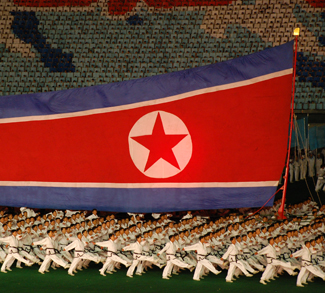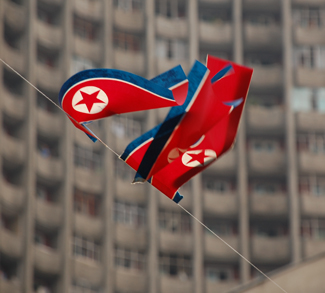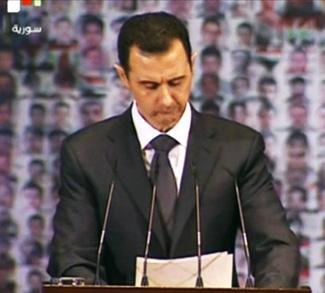North Korea is once again vying to hold the top spot among the most pressing and nerve-wracking global security crises of the moment. Although it is entirely reasonable to be concerned about how to respond to an aggressive and erratic state developing ever more powerful nuclear weapons and longer-range missile delivery technology, it is actually extremely dangerous to confine policymaking on North Korea to the immediate nuclear crisis. The challenges posed by North Korea to US (and, indeed, global) interests are serious, they are not new, and they frame the provocations of the moment as part of a broader challenge that will not simply fade if we put out the current fire. The policies of the United States and other regional stakeholders need to be focused on addressing the threat of an aggressive and potentially unstable regional military power over the long-term, likely for decades to come.
For the United States, stepping back and focusing requires a clearer accounting of what our broader interests are and how to pursue them. This involves looking beyond the more immediate question of whether Pyongyang is willing and able to launch a nuclear missile toward Honolulu, Seattle, Chicago, or New York in the next day, week, or year. At a minimum, this demands an explicit breakdown of the US interests at risk, the strategic conditions for meeting them, and the actual tactics that might help secure those conditions. It also means thinking through how US interests should be pursued even if the latest tensions are resolved peacefully, recognizing that these interests must be ranked, and accepting that the United States may face cases where there is no choice but to place lower priority goals at greater risk to focus on those that are even more central.
With popular tools either horribly costly or seemingly doomed to fail, subtler but more persistent techniques may be the better bet.
The first and most pressing goal should be protecting citizens of the United State, its allies, and regional bystanders (in that order) from widespread direct physical harm by the North Korean government and military, not just in 2017 but for as long as they continue to pose a plausible threat. The second goal should be preventing further proliferation of nuclear weapons technology to other states or rogue actors, whether by deliberate North Korean policy or by their failure to reliably control their existing materials. The latter is disturbingly likely if the government in Pyongyang eventually collapses into civil war or anarchy due to pressures from within or without. The third goal should be securing the safety and welfare of the North Korean civilian population, who face significant harm from their own government even in peacetime.
The ranking of these priorities is crucial. For example, US policymakers may have to postpone efforts to aid suffering North Korean civilians in order to prioritize securing North Korean nuclear materials in the event of a civil war or total state collapse in the country. Unfortunately, foreign policy often involves making tough choices about the least bad of several painful courses of action.
Whether or not a major provocation or an unplanned crisis forces an abrupt response any time soon, securing these interests will require the leaders of the United States and other interested countries to take sustained action to change at least one of three factors that continue to shape the dangerous long-term behavior of the North Korean government: its capabilities, its leadership, or its incentives.
The most frequently discussed responses to the North Korean nuclear program are unlikely to solve these problems. Even with a limited ability to defend against North Korean nuclear missile attacks, going to war with North Korea to cripple their military capabilities or leadership would almost certainly be a far more brutal and costly campaign for to the United States than anything the country has faced since the Vietnam War. Even in the best case scenario, it is virtually certain that there would be massive civilian casualties in both North and South Korea, with a high likelihood that the damage would extend well beyond the peninsula. Any attempt to quickly decapitate North Korea’s nuclear weapons, artillery, and leadership capabilities with a more limited preemptive strike looks unlikely to succeed.
Meanwhile, diplomatic negotiations are unlikely to resolve the issue over the long run for the simple reason that North Korea’s leadership will almost certainly continue to distrust US commitments to refrain from challenging their security or stability. The popular middle course of sanctions remains unsuccessful in truly changing North Korean behavior, particularly given the regime’s efforts to circumvent international restrictions. Given these limitations, continuing to deter North Korean aggression with credible and consistent communication about US plans for retaliation will be crucial in the near-term, but won’t be a substitute for a long-term solution to North Korea’s destabilizing role. At best, the status quo involves a set of stalling tactics that can provide time to try other approaches.
With popular tools either horribly costly or seemingly doomed to fail, subtler but more persistent techniques may be the better bet. One promising move would be to double down on efforts to disseminate outside media and ideas as widely as possible among the North Korean population, boosting political dissent and public skepticism toward the regime’s hostility to outside powers. While North Korean civilians will continue to face serious risks of violent repression if they let any signs of dissent show, the alternative to such attempts at covertly informing and educating the population is to leave them incapable of successfully restoring order if Pyongyang collapses due to failures and infighting among the leadership—let alone mounting any credible bottom-up challenge to their totalitarian oppressors that might produce a less threatening future government.
Although it may seem counterintuitive in light of the constant emphasis on sanctions, another possible tactic would be to identify ways to reinforce black and gray markets operating in North Korea and to link them to non-Chinese partners. This wouldn’t require any relaxation of sanctions used to pressure the core leadership and official state-driven economic enterprises. Instead, the aim would be to create alternative economic options for the population and to weaken the Pyongyang leadership’s relative monopoly control over the economy.
The ultimate goal for both moves would be to broaden the economic and political independence of North Koreans outside the core of the current leadership, as well as to diversify their network of current and potential partners outside North Korea. While certainly not a silver bullet, fueling a larger and more diversified set of cultural, economic, and political players in North Korea might generate domestic pressure for greater openness—or at least strengthen the network of domestic actors capable of contributing to stability if the regime falls into crisis. A more benign, robust, and stable North Korean polity to collaborate with is exactly what the US will need to secure itself and its allies for the long-term, to combat nuclear proliferation, and to ensure a better future for the North Korean population going forward.
If we are lucky, the immediate emergency in US-North Korean relations may continue to ease for the moment, but the lasting challenge of a hostile and potentially unstable North Korean regime won’t disappear because we choose to set it aside to deal with another time. It is well past time to prioritize the long game in North Korea.
The opinions, beliefs, and viewpoints expressed by the authors are theirs alone and don’t reflect any official position of Geopoliticalmonitor.com.



